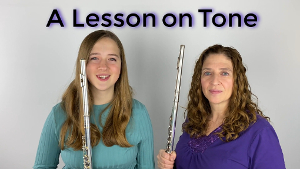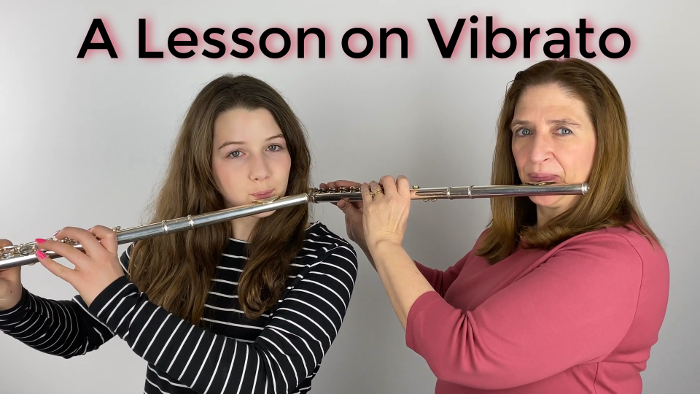How is your vibrato? Do you have vibrato, or do you think only some people can have vibrato?
Vibrato is one of those tricky things that we think is going to be extremely hard to learn. But with a little persistence and a couple little tips here and there, you too can play with vibrato.
Vibrato is one of those things that when you play flute, it makes your flute tone sound much more mature. When you play with vibrato, you sound like a more mature flutist. This is because It adds something alive to your tone. Your tone stops being a dead sound and it comes to life. It has movement in it.
I have discovered that when I teach vibrato to a young flutist, the less said the better. The more words I use the more it can make the process seem complicated. So, I like to go from the easiest method to the more detailed.
The easiest method is to tell students to just do it. I play vibrato and ask the student to do it too. I tell them to imitate what I just played. This is because some people get it right away. For whatever reason, some people just hear it and then can do it with little effort. It is not common, but it happens.
I then listen to the student. It is important that vibrato is placed in the correct spot. My description is that the wrong spot is a forward vibrato. Vibrato that sounds like it is coming from the mouth and is shooting out. That vibrato lays on top of your flute tone. It does not go inside the tone making a smooth, round sound. It can be a little bit like a machine gun.
So, where do you produce your vibrato? I am sure you can do a detailed search on the web and find out anatomically what is happening when you vibrate a note. But you know what? I don’t care. I only care where I feel vibrato being made. I would describe it as being produced in the back of the throat. Here is a way to feel where that spot is located. Begin by singing a note that is easy for you and then bend that pitch down. Basically, put a big wobble in it so that you dip perhaps a ¼ to a ½ step down and create a deep sound wave. Now, feel where this happens in your voice box. Know exactly where it is being produced. This is the back of the throat feeling. This is how I would describe it.
Can you make that dip or wobble slightly less deep? In essence speed it up a bit? Try starting slowly and then getting faster and faster. Take a breath where you need to and come back in at the same speed as before you breath. Most people try to get too fast too soon. Control that speed. If you get too fast and it the wobble disappears then go back to the slow large wobble.
Now, can we do that on the flute? Well, we cannot do this method exactly the same on the flute. We can bend our voices for the wobble. But on the flute, it is a whole different ball game. What you can do is pulse a note. You want to use the same motion as you did with your voice except instead of dipping down the note below, you will pulse. Make that pulsing begin to go little faster. Then faster. Don’t get too fast, too soon as that usually means the pulse moved out of the back of your throat to the front of the mouth where it shouldn’t be located.
As you begin to work on vibrato make sure that you have very good support. Vibrato is much, much easier if you have support. That pressure that is built up inside because you’ve tightened your muscles and created a cushion of air, pushes up and helps to create vibrato. It is much easier to pulse the air with good support.
Now, work on this pulsing and getting faster. Take a breath when needed and come back in at the same tempo that you left. This is something that you should practice on every day. It will become easier to hold steady and move to an actual vibrato. Whenever you lose that feeling of vibrato then stop and go back to the pulsing speed where you are still doing it properly.
This is exactly the process many students go through to get vibrato, and you can do it too. It is well worth your time to work on this process. It might take a while to get to a nice vibrato that is “always on.” But that’s okay. Don’t give up it’s not going to be perfect right away. Eventually when it works, and vibrato is now natural, you will have taken a giant step forward.
Have fun working on vibrato.
DoctorFlute
Watch me as I teach my 12-year-old daughter in real-time how to play with vibrato:
Live Flute Lesson on Vibrato with 12-Year-Old Student Waverly – FluteTips 122
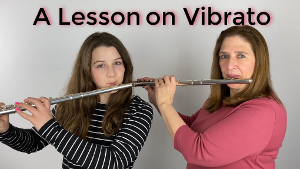
How to Create Vibrato on the Flute – FluteTips 109
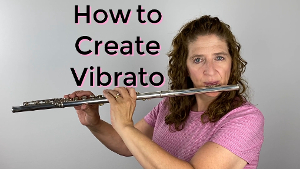
Vibrato Pet Peeves on the Flute – FluteTips 117
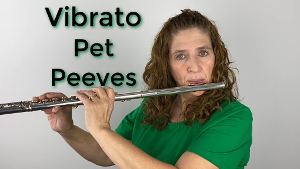
Live Flute Lesson on Tone with 14-Year-Old Student Allegra – FluteTips 120
